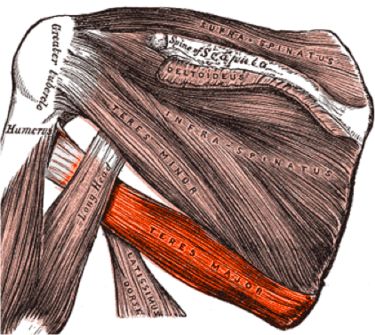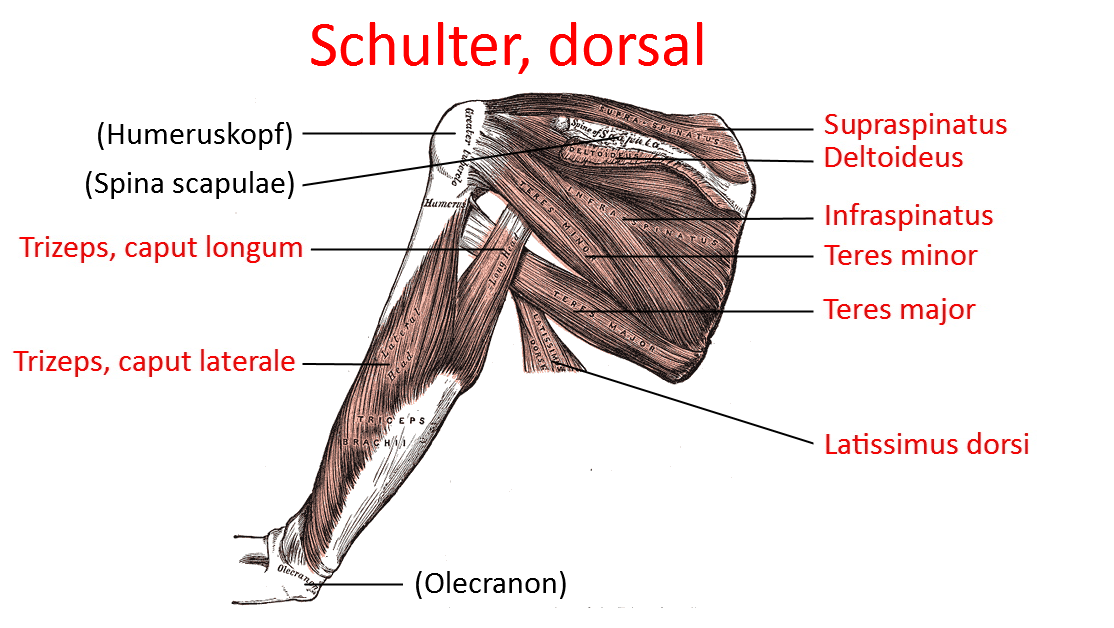yogabook / muscles / teres major

Linkmap

weitere Linkmap: Upper arm/shoulder/chest ventral
Teres major
the scapulohumeral muscle of the shoulder girdle that runs from the lower outer edge of the shoulder bladeto the anterior upper humerus and causes retroversion and endorotation as well as lateral adduction and frontal adduction of the arm. The teres major is one of the most important adductor muscles and, due to its endorotatory function, one of the most important muscles that limit the rotation of the arms in overhead postures. Consequently, all overhead postures with rotating arms are stretching (see below).
Origin: Lower edge of the shoulder blade
Attachment: Crista tuberculi minoris on the front of the humerus
Innervation: Nervus thoracodorsalis from plexus brachialis (C6-C7)
Antagonists:
Movement: Endorotation, lateral adduction and frontal adduction of the arm, endorotation (to a certain degree)
Strengthening postures (522): Postures with powerful adduction of the arm strengthen the teres major. frontal adduction, janu sirsasana, pasimottanasana, tryanga mukhaikapada pascimottanasana, uttanasana: pull on the lower legs. There are also ardha vasisthasana and vasisthasana, in each case when the hand on the floor is pushed towards the foot, and parsvakonasana, when the hand on the floor is pushed towards the foot of the outstretched leg.
Stretching postures (521): Back stretch elevated, hyperbola, urdhva dhanurasana, downface dog, especially variation „wide“, right-angled handstand, right-angled elbow stand, handstand, elbow stand, gomukhasana, parsvakonasana, caturkonasana, lying on the roll, dvi pada viparita dandasana, eka pada viparita dandasana.
